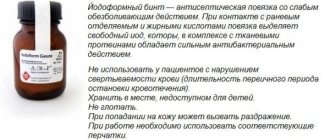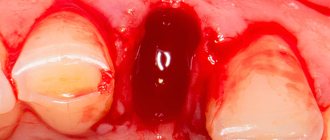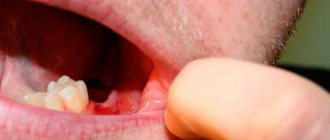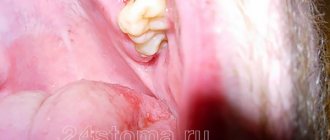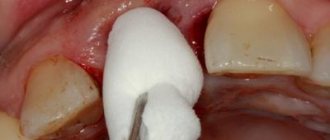Usually, the healing of the hole after tooth extraction occurs painlessly and does not cause any sensations in the patient. It would be good if everyone knew how this process works and how to speed it up.
Proper oral care after tooth extraction and following all the dentist’s recommendations will help speed up the healing of the hole and avoid complications.
How long does it take for gums to heal after tooth extraction?
Tooth extraction can be emergency or planned, but in each case healing occurs the same way.
Extraction of the organ is carried out when it is not possible to preserve the crown, in case of severe inflammation, or in advanced periodontal disease. The operation is performed under anesthesia, so there is no pain during removal. Unpleasant symptoms appear after the end of the dentist’s visit. The gums in the area of the removed organ hurt, but normally this goes away after seven days.
When the gums still hurt seven days after the tooth extraction is completed, and the inflammation does not subside for a long time, this indicates a complication. The most common consequences of organ extraction are alveolitis, bleeding, fracture, and injury to the socket.
How many days does it take for the socket and gums to heal?
During a complex operation, the dentist may damage the jaw or push the tooth root into the maxillary sinus. If you do not seek help from a dentist for a long time with such complications, even more terrible conditions appear - gumboil, cyst, osteomyelitis.
Complete healing of the gums after tooth extraction occurs within several weeks. All this time, the mucous membrane hurts a little, but is simply anesthetized with local drugs.
The healing time of the hole is personal for each patient. Recovery takes a long time if care recommendations are not followed. The gums after tooth extraction do not heal even after a couple of weeks, if an infection was introduced during the operation or after the end.
The gum heals in 14 days, and complete restoration of the socket occurs in six months.
What complications can tooth extraction lead to?
Normally, restoration of injured tissue occurs within three weeks. The red, inflamed gum gradually acquires a pale pink color and ceases to be painful on palpation. But if a person has diseases that prevent rapid recovery, or he does not comply with doctor’s orders, then the rehabilitation process can be difficult. Then the patient will face complications, including:
- hematoma;
- severe swelling of the soft tissues of the cheek;
- frequent bleeding from the wound;
- numbness of the tongue, cheeks, lips;
- pain while eating.
If the healing of the hole is in doubt - a person thinks that something is going wrong - he should immediately consult a doctor. The doctor will conduct an examination and tell you whether you need to use any drugs to speed up regeneration.
Why does the hole take a long time to heal?
Epithelization of the gums after the operation begins after a couple of days, and a white coating appears on it. Now it doesn’t hurt so much anymore, and there are no signs of inflammation. At this time, it is better not to touch the mucous membrane, but just continue to properly take care of the hole. It may not heal for a long time due to the patient’s personal quirks, at a time when there are diseases of the circulatory system or chronic inflammatory processes in the body.
If your gums hurt very badly after seven days, this is possible:
- Dry socket or alveolitis - this complication often appears when the rules for organ removal are not followed, while part of the crown or root remains in the socket. Under such conditions, the blood clot, which should protect against infection, falls out. This complication much more often begins on the 5th day after the end of the operation. Common symptoms are gum discoloration, unpleasant odor, halitosis, soreness, slight bleeding;
- Chronic bleeding - this complication is observed in people with hypertension and in the case of blood diseases. This may result in alveolitis. Before sending the patient home, the dentist stops the bleeding and places a hemostatic sponge on the hole;
- A fracture or dislocation of the lower jaw is a rare complication that occurs more often during the removal of a wisdom tooth; the risk increases if there is a cystic formation or acute inflammatory process in the root area;
- Perforation of the maxillary sinus is possible as a result of complex removal of chewing teeth in the upper jaw.
If the hole hurts for a long time, and it does not go away after seven days, you should immediately consult a doctor. It is forbidden to cope with complications that appeared during the removal on your own. Apart from this, there is no way to prevent them, so first aid is provided immediately after the procedure is completed.
Complications due to improper care, which slow down gum healing, can be prevented on your own.
Causes
Tooth granulation can lead to the formation of granuloma for various reasons:
- Unsuccessful removal, after which a necrotic area of the apex of the tooth root remains in the gum.
- Chronic jaw diseases in which sequestration is formed. In this case, gum granulation forms around them.
- Pulpitis and a rapidly spreading infectious process in the gums.
- Injuries that provoke the development of a focus of inflammation, resulting in the formation of a granuloma.
Since granulation tissue grows rapidly, it begins to replace cells that have died as a result of injury or inflammation. Therefore, it is very important not only to stop the infection, but also to carefully scrape out the cavity.
What to do after the extraction is complete
It is possible to realize that the hole is healing correctly on the 3rd day. The gums hurt moderately, and a white coating appears on it. It is extremely important not to remove it, since it is new epithelium. After 2 weeks, the onion should be completely covered with granulation tissue. After a month, bone tissue begins to regenerate in the entire socket. After 50 days, bone tissue fills the entire hole. And only after five to six months the hole is completely healed and does not differ from other bone tissue.
The gums will recover faster after tooth extraction is completed if you follow easy recommendations.
In the first days after surgery, minor bleeding may occur. Under such conditions, you need to take a small piece of cotton wool or gauze, soak it in hydrogen peroxide, and apply it to the hole. It is much better to go to the pharmacy immediately after removal and buy a hemostatic sponge. A small piece must be applied to the hole; it will dissolve on its own.
Do not rinse your mouth for the first 24 hours.
It is necessary to avoid warm foods and drinks, and not to take alcohol or blood thinners. It is possible to numb the wound with drugs such as Nimesil, Ibuprofen, Paracetamol. While brushing your teeth, you must avoid moving the bristles near the removed organ. If bleeding starts unexpectedly after a couple of days, you should immediately go to the doctor. This also applies to those cases when the pain is not relieved by simple analgesic and anti-inflammatory drugs.
On the third day, it is already possible to start rinsing the oral cavity with warm antiseptic solutions and herbal decoctions. This will speed up the healing of the hole and prevent inflammation and infection of the wound. For a couple more days you need to refrain from heat, sports, saunas, baths.
Some medications can have the opposite effect, leading to bleeding, so the medication must be coordinated with the dentist. Before removing the doctor, it is imperative to give a warning about concomitant and previous diseases. Tooth extraction has contraindications, and if they are missed, complications cannot be avoided.
Care and treatment after the procedure
Normally, a blood clot should form in the socket.
In order for the healing process of the hole after removal of the hole to proceed quickly and without complications, you need to adhere to the general rules:
- do not consume hot food and drinks;
- limit alcohol intake and cigarette smoking;
- do not rinse your mouth on the first day after surgery;
- do not put stress when chewing food on the part of the jaw where the operation was performed;
- Eating after tooth extraction can be planned only after 2 hours, not earlier;
- when performing oral hygiene, you should not touch the blood clot in the socket so as not to damage it;
- When preparing for bed, you need to add another pillow so that your head remains elevated.
In cases where there is a high risk of developing inflammation or pain occurs, specialists prescribe medications:
- painkillers - Analgin, Pentalgin, Nurofen, Xefocam, Nise;
- antibiotics – Lincomycin, Amoxicillin, Augmentin, Metronidazole, Cifran;
- antipyretics – Efferalgan, Paracetamol, Ibuprofen, Nimulid.
Nise (pain reliever)
Amoxicillin (antibiotic)
Paracetamol (antipyretic)
For local processing, the following means are used:
| Asepta gel | Relieves irritation, redness, promotes cell regeneration, prevents the proliferation of microorganisms. |
| Cholisal ointment | It has an antiseptic and analgesic effect, promotes cell regeneration. |
| Streptocide ointment | A local antibiotic that resists the spread of pathogens such as toxoplasmosis, herpes, chlamydia, Escherichia coli and Pseudomonas aeruginosa. |
| Levomekol | Antimicrobial agent, relieves inflammation, launches regenerative function. |
rinse with antiseptic solutions 3-4 times a day . Among the most popular:
Chlorophyllipt
Salvin
Rotokan
Furacilin
In the absence of the listed remedies, you can carry out procedures using proven folk recipes: decoctions of chamomile, calendula, sage, a solution of soda (1 teaspoon per glass of water). It’s easy to prepare, just pour boiling water (200 ml) over a tablespoon of dried flowers and, cover with a lid, let it brew for 30-40 minutes.
You should fill your mouth with a small portion of liquid; when rinsing, do not make sudden movements, especially from the side of the hole. The product should rinse the well for at least 30 seconds.
When to see a dentist
A visit to the doctor should not be delayed in the following cases:
- Initially or after a couple of days, a blood clot falls out;
- A purulent lump appears in the area of the hole;
- The pain does not go away for a long time and inflammation appears;
- The entire jaw begins to ache, radiating to the temple and eye areas;
- There is a constant iron taste of blood in the mouth;
- Pain appears in the area of the adjacent tooth;
- Within 5 days the gums are not covered with white plaque.
If you are worried about your teeth, you will be helped at the Doctor-RAF Dental Clinic (Almaty, Muratbayev St., 101). Our highly qualified specialists will help you solve all your dental problems.
During the operation, a neighboring organ may be damaged. This will manifest itself as symptoms of pain, and perhaps the tooth will begin to loosen.
Complex removal will require additional care and the use of bactericidal drugs, but only those prescribed by the dentist. Self-prescribing antibiotics is prohibited. An exception would be local gels and ointments, which are available without a prescription and have an anti-inflammatory effect.
8 reasons why the hole does not heal after tooth extraction, ways to speed it up.
After tooth extraction, it seems that the worst is over. However, this is a surgical operation that does not exclude the possibility of complications, especially if you do not follow the doctor’s recommendations. What to do when the hole does not heal?
What are the stages in the rehabilitation process?
To be able to identify the problem in time, you should know how and how long the hole heals, how long it can bleed and hurt after removal. And for this it is worth familiarizing yourself with the main stages of healing. Let's look at each of them in a little more detail.
Gradual restoration of soft tissues
A few hours are enough for a protective blood clot to form. You should not touch it or try to remove it, because it acts as a kind of barrier that prevents harmful microorganisms from entering an open wound. During the soft tissue healing stage, you should conscientiously brush your teeth at least twice a day, but without affecting the causative area. You should also rinse your mouth every time after a snack, but again without excessive intensity. Around day 2-3, epithelization begins, which is accompanied by the formation of granulation tissue. The patient loses severe pain, swelling and redness disappear. Next, the wound is covered with a white coating. To understand what a properly healing hole looks like, take a look at the photo below.
The photo shows a properly healing hole after removal
If plaque of a different color has formed in the hole, there is cause for concern. A yellowish or even black color of the hole, coupled with bad breath, indicates the onset of inflammatory processes. It should also be taken into account that after wisdom tooth extraction, the recovery process takes longer. Typically, figure eights initially grow in the wrong position, which is why, to remove them, the doctor has to cut the gum and then suture it. This involves more extensive intervention and, accordingly, longer rehabilitation.
Bone tissue regeneration
Bone tissue begins to form only 7-8 days after surgery. The blood clot should still remain in the socket, but the depression where the tooth used to be is no longer as clearly visible. The patient almost completely loses the feeling of discomfort; there is no more pain or discomfort. The bone regeneration process is usually completed by the end of the second week.
Consolidation of new bone tissue
New hard tissues become denser and stronger. After a certain period of time, they turn into full-fledged bone. This is a fairly long period, which, however, does not cause any discomfort to the person. However, the entire process takes about 4 months.
Fusion of bone with gum
The final stage of rehabilitation involves the fusion of new bone tissue with the jawbone. This stage also takes about 4 months, but only if the operation was successful and there were no complications. If inflammatory processes have occurred, fusion can take up to 6-10 months.
The photo shows the healing pattern after removal
Healing process
The stages of wound healing are as follows:
- The first day: the hole fills with blood, which turns into a clot due to coagulation. It becomes the basis for bone formation in place of the void, and also protects against infection.
- 3-4 days: the clot is replaced by granulation tissue. By this time, the severity of pain decreases, and sometimes the area of surgery stops hurting completely.
- Week: a clot remains inside the socket, but most of it has already been replaced by granulation tissue.
- Two weeks: the wound is filled with granulation tissue, turning into bone along the edges and bottom.
- 2-3 months: the hole completely turns into bone.
In order for recovery to occur correctly, you must follow all the doctor’s recommendations.
What can be put in place of an extracted tooth?
There are many options for replacing an extracted tooth. An experienced orthopedic surgeon will offer removable and fixed structures, solutions for restoring individual teeth or a number of missing units, and reconstruction of a completely edentulous jaw. For each case, protocols, methods, and treatment techniques are provided.
How to insert a tooth in place of a removed one - options:
- prosthetics on dental implants;
- bridge prosthesis;
- removable prosthetics;
- clasp prosthesis.
What can be put in place of an extracted tooth depends on:
- number of units removed;
- condition of bone tissue;
- dental diagnoses;
- patient's age.
Based on the preliminary diagnosis, the doctor makes a decision on the timing and features of treatment.
Why doesn't the hole heal?
The timing of wound healing is an individual question. It is determined by several factors - the traumatic nature of the removal, the presence of postoperative sutures, and the age of the patient. It is believed that partial epithelization takes about 2 weeks, complete - up to two months. These deadlines may increase for the following reasons:
- The bone was severely damaged. This happens, for example, during a complex extraction, when the tissue around the tooth has to be cut out with a drill.
- The clot has fallen out, so there is no basis for the formation of granulation tissue.
- Due to the doctor's fault, bone fragments remained in the wound.
- The patient ignores the recommendations received. The most common mistake is rinsing out the clot, after which an infection from the oral cavity gets into the wound.
- The mucous membrane around the wound is mobile, and no stitches were applied.
- Carious remains entered the cavity and inflammation began.
- The surgeon did not take into account individual characteristics. For example, with arterial hypertension, heavy bleeding begins, so drugs that lower blood pressure are additionally prescribed.
- Old age of the patient.
What determines the speed of gum healing?
Removing the figure eight is a complex operation that is important to entrust to professionals. The chief doctor of our dental clinic tells more about why it is important to carry it out here. The difficulty of the operation is that the eighth teeth are located anatomically incorrectly in 8 out of 10 cases.
Criteria affecting the speed of gum healing:
- traumatic operation,
- size and position of wisdom teeth,
- patient's age,
- existing chronic diseases,
- taking medications,
- state of immunity,
- individual characteristics of the body.
Ways to speed up healing
The best thing a patient can do to speed up epithelialization is to create conditions in the oral cavity that are close to sterile. To do this, you must follow some rules:
- Squeeze the cotton swab applied after surgery tightly with your teeth for 15-20 minutes.
- Do not eat for 3 hours so as not to interfere with the clot formation process.
- In the first days, do not smoke, give up alcohol and solid food.
- Avoid heavy physical activity, temperature effects (hot drinks and dishes, trips to the bathhouse, sauna).
- Do not chew on the injured side for two days.
- Avoid rinsing and use chlorhexidine baths instead.
- Take prescribed medications - for example, antibiotics, which are prescribed after a complex removal, in the presence of purulent processes.
- After consulting with your doctor, use Solcoseryl, a gel that helps accelerate epithelization.
It is important to remember that the area where the deletion took place is a very vulnerable place. The mouth is home to a large number of opportunistic microorganisms, which, in the presence of a source of bleeding, become pathogenic, triggering the inflammatory process. To perform the operation, you should choose an experienced surgeon and strictly follow his recommendations after the procedure.
Is it possible to smoke?
It is difficult for smokers to give up their habit due to the fact that with the help of a cigarette they get an imaginary release. But this should not be done after surgery, at least in the first hours. Cigar smoke contains tars and chemical components that irritate the surface of soft tissues.
After smoking, bleeding is provoked, pain increases, which slows down the healing of the hole. In addition, the risk of infection and complications increases.
